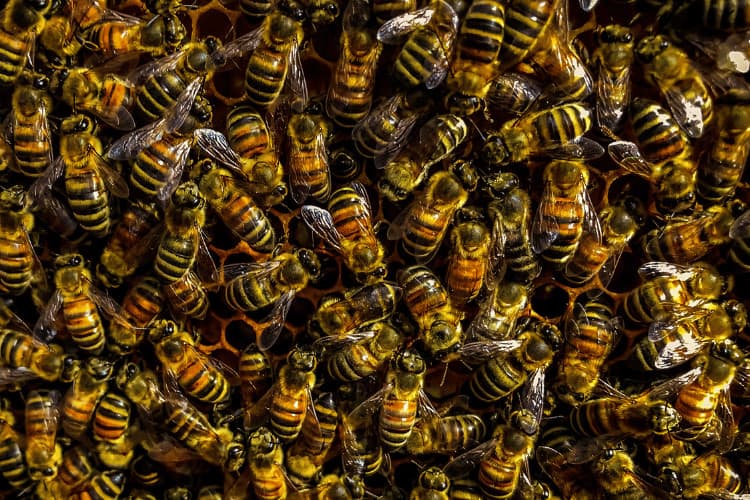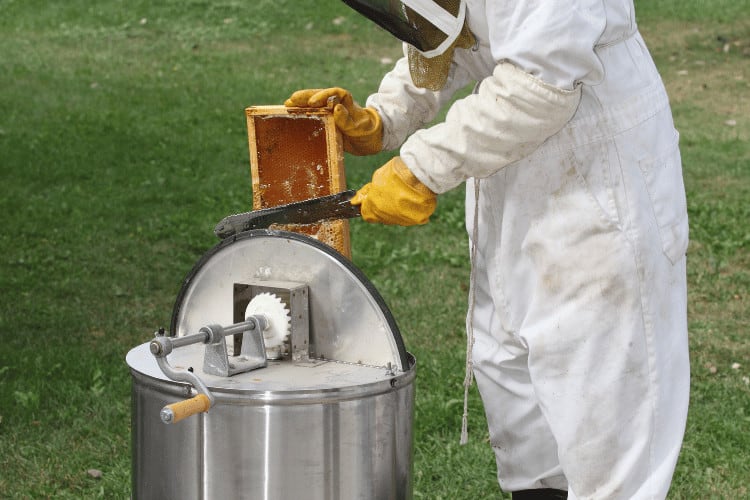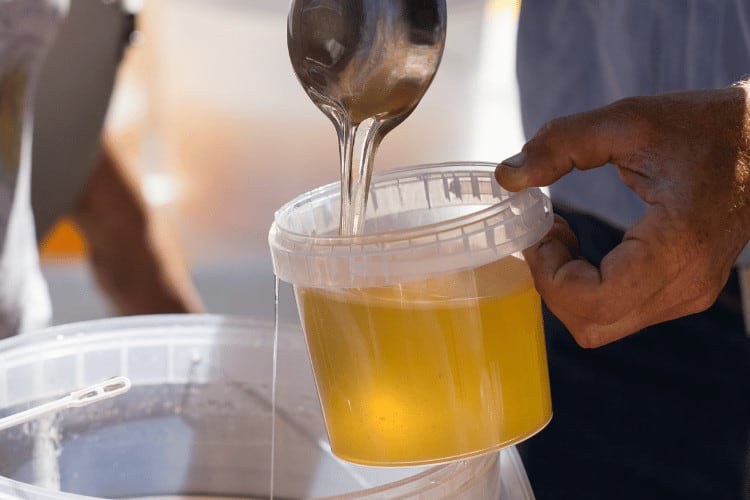My Bees Died Over Winter, Can I Harvest the Honey?
Bees are exceptionally resilient and can handle a wide variety of environments. Although, as winter comes around, there’s a chance the flying critters won’t be able to withstand the cold.
Because of that, as the frosty fingers of winter recede, beekeepers eagerly approach their hives. We do so in hopes of finding bustling colonies ready to embark on a new season.
However, nature’s whims can be unpredictable. The heart-wrenching discovery of a hive that didn’t survive the cold is not uncommon.
So, at this point, you may wonder, my bees died over the winter, can I harvest the honey? If that’s the case, we’ve got an answer for you.
In this article, we delve into this query. We’ll explore the possibilities and considerations surrounding the remaining honey.
How Can I Be Sure the Entire Colony Is Gone?

After a cold winter, it’s no surprise that bee activity will be at a minimum. Although, that doesn’t mean you have dead hives on your hands.
Instead, it may mean your buzzing critters are in hibernation. So, before you consider harvesting the honey, you have to assess the colony’s status.
A hive that has perished over winter often exhibits unmistakable signs of distress. As you approach the dead beehive, a lack of activity around the entrance may be the first indicator that something is amiss.
Bees that didn’t survive the cold may be both inside and outside the hive. These somber remnants can provide valuable information about the honey bee colony’s final moments.
The absence of broods, or young and developing bees, is another telling sign. A healthy colony should have been raising new bees to prepare for the coming season.
The presence of dead brood cells shows the challenges the colony faced. Besides the weather, those empty cells may be due to a few pests. These include:
- American Foulbrood (AFB)
- Varroa Mites
- Wax Moth Larvae
- Tracheal Mites
Observation is key during this assessment. Yet, this investigation is just the beginning of the journey.
Should I Harvest the Honey After the Bee Colony Dies?
Yes, you can harvest honey from a hive that died over winter. Yet, this affirmative response comes with some precautions.
After mourning the loss of the dead hives, it’s time to think about the honey. The decision to harvest the sweet treat from a hive that died hinges on various factors.

Factors That Affect Honey Harvest
First up, one significant aspect to consider is the state of the honey stores themselves. Bee colonies accumulate honey reserves as sustenance for the colder months.
So, if the hive succumbed to a lack of food, they may have depleted the honey stores. This is common in winter losses.
Besides that, you should take the honey quality into account. The condition of the sweet treat may not be on par with the golden nectar associated with thriving hives.
Bees play an essential role in the final stages of honey production. They’ll ripen the nectar through processes like evaporation and enzyme activity.
In the absence of these flying critters, the moisture content of honey may be higher than usual. This can potentially lead to fermentation or even spoilage.
Moving on, you also have to ensure the safety of both you and the consumers of the honey.
Harvesting honey from a hive that experienced colony loss requires vigilance regarding contaminants. The dead bees, along with any debris within the hive, may introduce impurities into the honey.
So, cleaning procedures become paramount to ensure the honey’s purity.
How to Ensure the Honey Harvest Is Safe for Consumption?
Harvesting honey from a dead hive needs close attention to ensure the honey’s safety. The journey from hive to jar involves essential steps.
Each one contributes to preserving the purity and flavor of this precious commodity.
The first thing you’ll have to do is clean the honey extraction equipment and hive tools. That includes uncapping knives, honey extractors, and strainers.
This will prevent any contamination that may have occurred due to the dead beehive.
After that, it’s time to filter the honey. Use a fine-mesh strainer or cheesecloth to remove impurities.
Get rid of any bee parts, wax, or other debris, like dead wax moth eggs. Once the filtration is over, let the honey settle for a short period.
The process allows any air bubbles to rise to the surface. This should aid in the natural honey clarification process.
Finally, bottle the sweet treat in dry containers with tight-fitting lids. Plus, don’t forget to label and date each jar.
Can I Sell the Honey I Harvest From Dead Beehives?

After cleaning and filtering the honey, it should be safe for consumption. So, you’ll be able to sell it without worrying about harming anyone.
Yet, to ensure there are no issues with the harvest, you may want to run a few tests. Contact a local laboratory and ask them to screen your honey.
They should be able to tell you if there are any contaminants left in the sweet treat. That may include pesticides or other toxic chemicals.
Wrapping Up
My bees died over winter, can I harvest the honey? The answer to this question is a cautious yes. You should be able to collect the sweet treat.
Yet, there are a few factors you have to take into account. First up, look at how much of the sweet treat you have left.
The bees may have depleted the entire supply. Other than that, check the quality of the honey. This is crucial because excess moisture may lead to fermentation and spoilage.
Finally, before you sell the golden sugar syrup, it’s best to send it out to a lab for testing.
